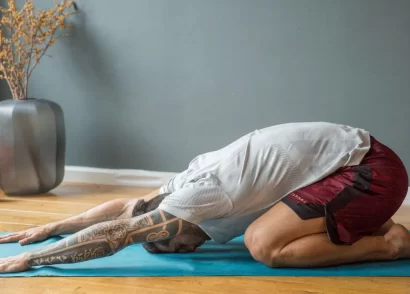Yoga has become immensely popular over the last couple of years, and for good reason: it’s incredibly effective for almost everything that an athlete or someone with busy, hectic lives could ever wish for. When you do yoga exercises, you focus on your body, which will in turn give you more strength, flexibility, balance, endurance, and flexibility. While physical exercise is certainly a good way to decrease stress, sometimes it comes at the cost of building up more resistance to exercising, which makes it difficult to raise your heart rates or push yourself to higher intensity levels. However, yoga can be a much better way to cope with stress because it combines physical fitness with self-awareness, compassion, and awareness.
For example, yoga can be practiced to help alleviate depression by teaching the practitioner deep breathing techniques. These breathing techniques are especially helpful for those who are highly stressed out and find that their symptoms of depression are aggravated by feeling “stuck” or “in the rut.” However, yoga can also be used to relieve the symptoms of post-natal depression, anxiety caused by traumatic events, and even to treat symptoms of chronic fatigue syndrome. This last condition is an extreme case, of which some people only experience occasionally. Yoga is also practiced to help alleviate physical pain, as well as conditions such as menstrual pains and menstrual cycles, excess body weight, digestive problems, and headaches.
While yoga is very beneficial to the body and to the mind, there are some common problems that can be treated through yoga meditation and postures. These include back pain, neck pain, migraines, poor posture, repetitive strain injuries, joint pain, and eye strain. While these problems may not occur on a daily basis, they can nonetheless be exacerbated by a lack of relaxation, exposure to too much stress, and an unhealthy lifestyle. However, these common problems can be alleviated through yoga practices. One such method is breathing exercises, which teach the practitioner to slow their breathing rate and increase the amount of oxygen in their bodies. While practicing yoga postures, the practitioner will learn to breathe deeply and slowly while maintaining proper posture.
The mind-body connection is strengthened even more when one begins to practice yoga regularly. The more one becomes aware of their thoughts and how they are influencing their lives, the easier it becomes to change those thoughts. Additionally, regular yoga participants are able to evaluate their thoughts to see if any behaviors or thought patterns are interfering with their daily experience. By doing so, yoga practitioners can learn how to reduce or eliminate the effects of stress and anxiety.
In addition to helping to alleviate the symptoms of depression and stress, yoga also has benefits for reducing cortisol, a stress hormone. Cortisol is found to be significantly lower during yoga sessions than it is during other activities, including exercise, sports, and games. The reasons for this are unclear, but yoga likely has something to do with it. Regardless, yoga consistently produces better results than exercise and other activities when it comes to lowering cortisol levels significantly.
Overall, yoga has many positive health benefits, particularly when practiced regularly and in conjunction with meditation. Studies have shown that many people find that when they practice yoga, the benefits become much greater than if they were simply doing their standard daily activities. If you are experiencing problems with stress and/or anxiety, whether it is related to your work, home, or school, consider giving yoga a try.











